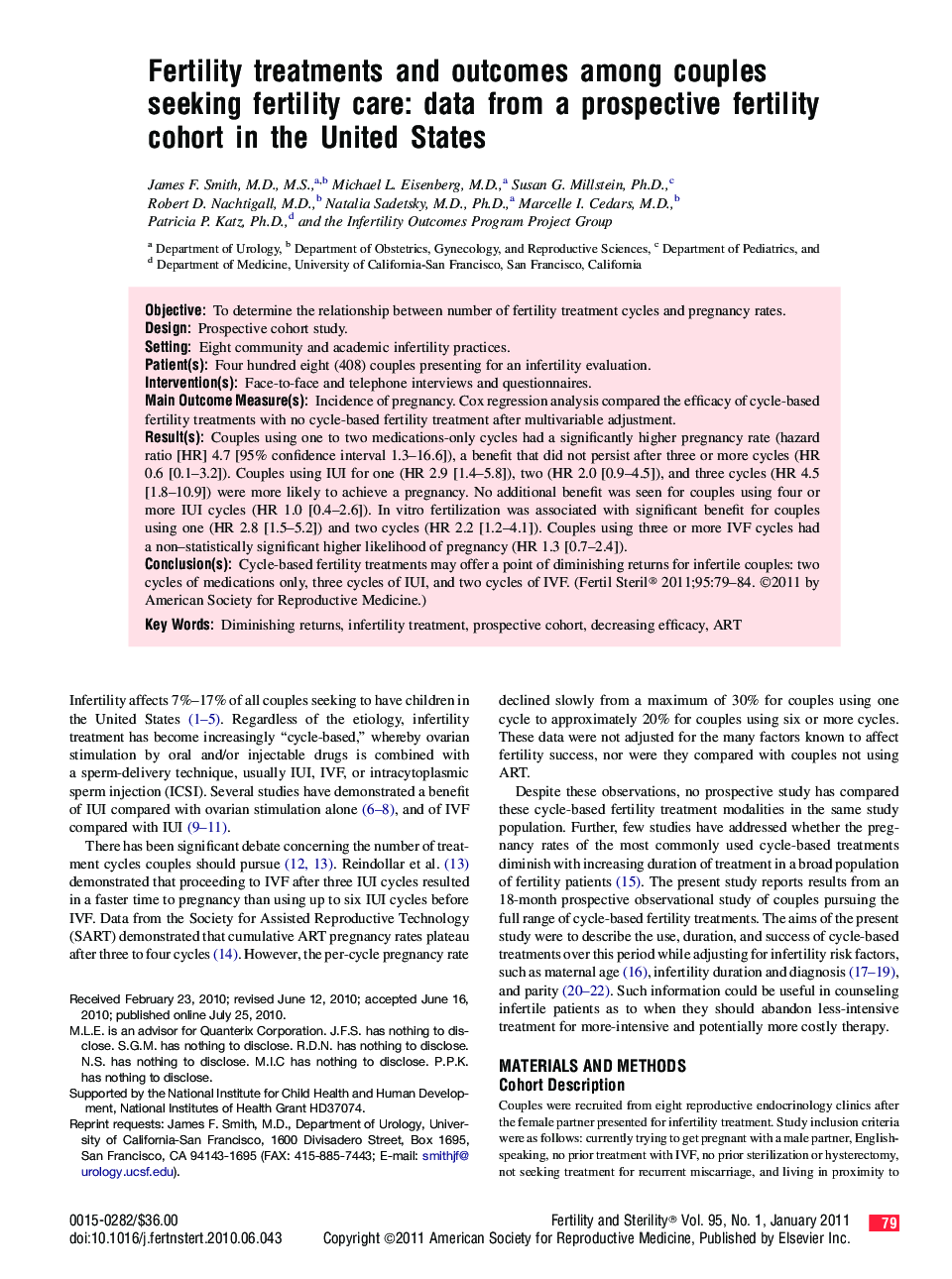| Article ID | Journal | Published Year | Pages | File Type |
|---|---|---|---|---|
| 3932608 | Fertility and Sterility | 2011 | 6 Pages |
ObjectiveTo determine the relationship between number of fertility treatment cycles and pregnancy rates.DesignProspective cohort study.SettingEight community and academic infertility practices.Patient(s)Four hundred eight (408) couples presenting for an infertility evaluation.Intervention(s)Face-to-face and telephone interviews and questionnaires.Main Outcome Measure(s)Incidence of pregnancy. Cox regression analysis compared the efficacy of cycle-based fertility treatments with no cycle-based fertility treatment after multivariable adjustment.Result(s)Couples using one to two medications-only cycles had a significantly higher pregnancy rate (hazard ratio [HR] 4.7 [95% confidence interval 1.3–16.6]), a benefit that did not persist after three or more cycles (HR 0.6 [0.1–3.2]). Couples using IUI for one (HR 2.9 [1.4–5.8]), two (HR 2.0 [0.9–4.5]), and three cycles (HR 4.5 [1.8–10.9]) were more likely to achieve a pregnancy. No additional benefit was seen for couples using four or more IUI cycles (HR 1.0 [0.4–2.6]). In vitro fertilization was associated with significant benefit for couples using one (HR 2.8 [1.5–5.2]) and two cycles (HR 2.2 [1.2–4.1]). Couples using three or more IVF cycles had a non–statistically significant higher likelihood of pregnancy (HR 1.3 [0.7–2.4]).Conclusion(s)Cycle-based fertility treatments may offer a point of diminishing returns for infertile couples: two cycles of medications only, three cycles of IUI, and two cycles of IVF.
